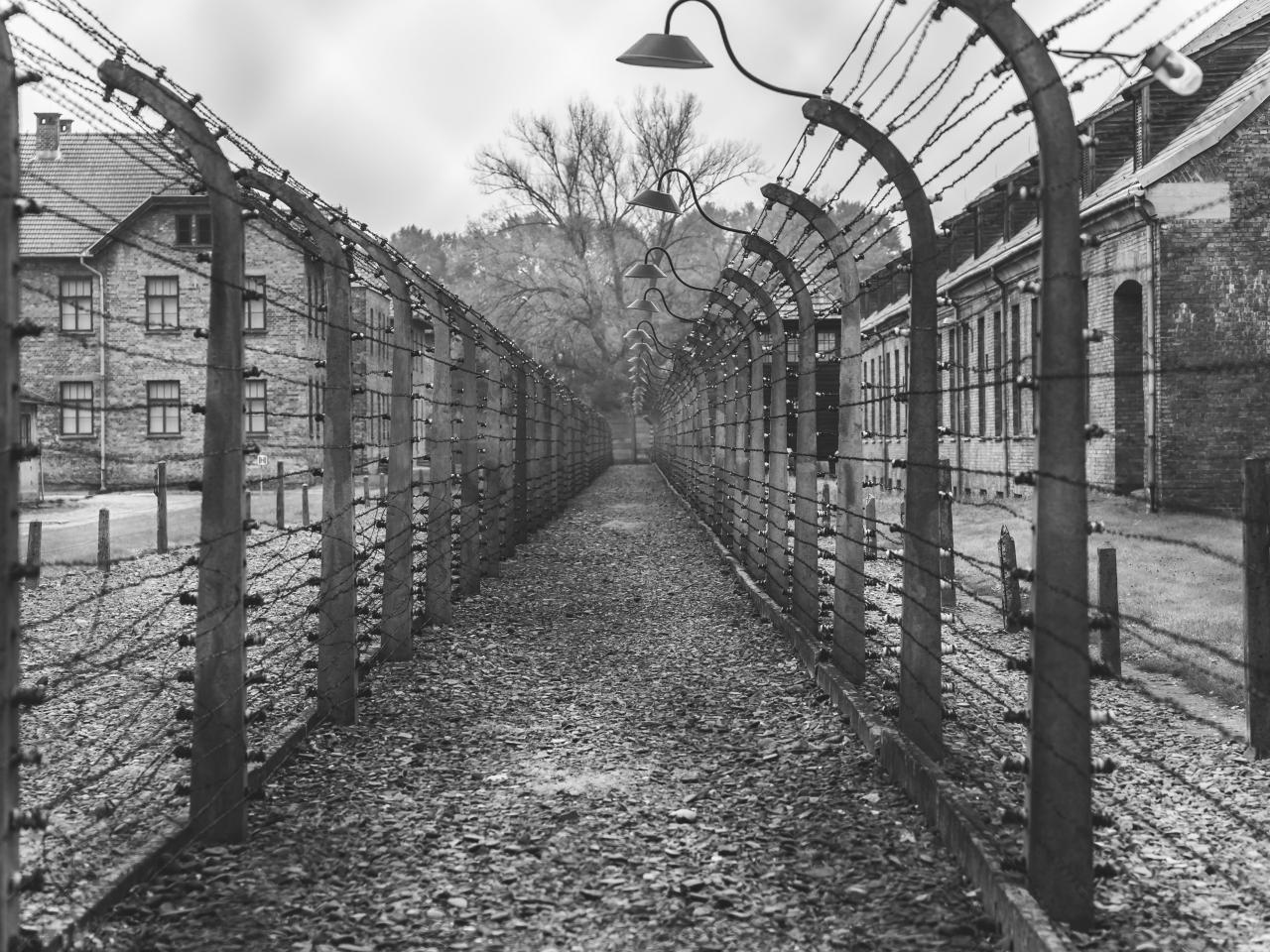Why We Remember

Photo credit Karsten Winegeart.
The August night sky was set ablaze with the terrifying glow of torches clenched by members of an angry mob. A surreal demonstration unfolded as chants rang out, “Jews will not replace us.” As much as this march of hate resembled a scene from 1940 Nazi Germany, it inexplicably took place just four years ago in Charlottesville, Virginia. This display of unabashed anti-Semitism would culminate in the murder of Heather Heyer, age 32, when a self-proclaimed Neo-Nazi slammed his speeding car into a crowd of counter-protestors.
History has repeatedly proven that mankind is capable of unspeakable acts of horror. Unfortunately, memories quickly fade and even the most undeniable instances of human suffering become misunderstood and remembered in bits and pieces. Annually on January 27th, the United Nations commemorates International Holocaust Remembrance Day (IHRD) as the moment when the Auschwitz-Birkenau killing center was liberated by the Soviet army in 1945. In the United States, Days of Remembrance take place in the Spring, from the Sunday before the Hebrew Holocaust Remembrance Day, Yom HaShoah, through the following Sunday.
Though meticulously researched and acknowledged as fact by the German government, misinformation and denialism of this historic atrocity spreads as survivors of the Holocaust continue to pass. A 2020 study by the Pew Research Center found that more than half of Americans don't know that 6 million Jews and millions more Jehovah’s Witnesses, Roma people, LGBTQI people, people with disabilities, and others were killed in the Holocaust. A third of Americans can't even identify the decades when the Holocaust occurred.
With so many glued to computer screens and other devices throughout the COVID-19 pandemic, a surge of disinformation has triggered an eruption of distorted truths. In school districts around the country there are contentious fights over attempts to erase the many historic and present-day forms of oppression including the Holocaust, the Trans-Atlantic slave trade, the genocide of Indigenous people, the demonization of migrants and Muslims, and the list goes on. The tactics deployed by the Nazis of sowing hatred, disseminating false narratives, and creating scapegoats has been on full display in recent years, and a renewed sense of urgency has arisen to teach truth and promote compassion and justice.
As this war of (mis)information rages throughout the world, the battle over truth must be confronted with persistent and deep vigilance. The wealth of vital and thoughtful information in New Day Films’ collection is a critical resource to expose and help students contextualize the lessons of the Holocaust in order to develop critical thinking, support social emotional learning, and create a deeper understanding of how to actively counter racism and the spread of false narratives.
My Dear Children by LeeAnn Dance follows one woman’s quest to unravel a family mystery - a journey that reveals a little-known anti-Jewish tragedy following World War I. In the Shadow of Memory by Jacky Comforty focuses on Jerri Zbiral, the daughter of a survivor of the Nazi destruction of the Catholic village of Lidice, Czechoslovakia. The Optimists also by Jacky Comforty tells the story of how the Jewish population of Bulgaria was saved by the brave actions of common men and women. Tangled Roots by Heidi Schmidt Emberling confronts the devastating secrets and painful silence Germans and Jews struggle with decades after World War II. Nobody Wants Us by Laura Seltzer-Duny is the story of three teenagers and their families hoping to make it safely onto American soil while trying to escape the Nazi invasion of Europe.
Today more than ever it is essential to take advantage of the New Day Films collection to develop the critical competencies and knowledge necessary to promote truth and a just society.